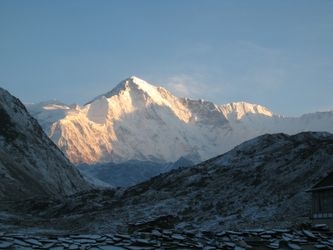Climbing Shishapangma

Shishapangma, standing at an impressive 8,027 meters, is the 14th highest mountain in the world and the only one entirely within China and Tibet. It's often considered a bit of a hidden gem among the 8,000-meter peaks, partly due to its remote location in the Tibetan Himalayas. Unlike some of its more famous brethren, it doesn't have the same level of commercialization, which is a blessing if you’re seeking solitude. The mountain offers a variety of routes, but the most commonly attempted is the North Ridge, starting from the base camp at around 5,000 meters. From there, climbers typically set up three more camps before the summit push.
The climb itself is more straightforward compared to the technical challenges of peaks like K2 or Annapurna, making it a popular choice for those looking to bag their first 8,000-meter summit. However, don’t let the relative simplicity fool you; the altitude and weather conditions can be unforgiving. The mountain has seen its share of mishaps, and the weather can turn quickly, so solid acclimatization and preparation are key. The final push to the summit involves navigating through snowfields and potential cornices, so timing and route-finding are crucial to a successful ascent.
In spring and autumn, the weather is usually more stable, making these the preferred seasons for an attempt. Keep in mind that even though Shishapangma might not require the technical prowess of the more treacherous peaks, the sheer altitude demands respect and careful planning. If you're considering an expedition, you’ll find that there are 19 guides offering climbs up Shishapangma, providing a range of options for those looking to undertake this magnificent journey.
Difficulty
- PD: Not very hard (alpine grade 2)
When to go
- April and May
- September
Guide links
Shishapangma History
Climbing history of Shishapangma
The history of Shishapangma is intertwined with the culture and people of Tibet, where it stands as the only 8,000-meter peak entirely located within the region. The mountain's name, "Shishapangma," is derived from the Tibetan words meaning "grassy plain" or "meadows," a reflection of the area's geographical features and the traditional lifestyle of the local inhabitants who have lived in harmony with the land for centuries.
The first successful ascent of Shishapangma was achieved on May 2, 1964, by a Chinese expedition led by Xu Jing. This marked a significant achievement, as it was the last of the eight-thousanders to be climbed. Prior to this, the mountain had relatively little attention from international climbers due to its location within Tibet, which was less accessible to foreign mountaineers during the mid-20th century.
Early attempts to summit Shishapangma were primarily undertaken by Chinese climbers, with limited documentation available about these initial expeditions. It wasn't until the late 1970s and early 1980s that foreign climbers began to make notable attempts, drawn by the allure of the relatively unclimbed peak. Among these was the 1980 British expedition led by Doug Scott, which faced severe weather conditions and ultimately did not succeed in reaching the summit.
In the years following the first ascent, Shishapangma became a target for mountaineers seeking to complete ascents of all fourteen 8,000-meter peaks. The mountain has since been climbed via several routes, with the southwest face being one of the most challenging and respected climbs in the mountaineering community. Despite its relatively lower altitude compared to other Himalayan giants, Shishapangma's history is rich with stories of perseverance and exploration.
These climbs are similar in length, difficulty, and elevation. Offering a similar level of challenge as the Shishapangma climb.




